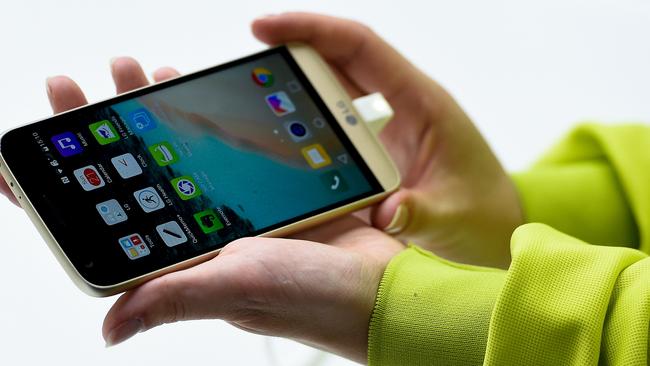Mobile surprises from unlikely sources
LG and HP’s redefined smartphones and Oppo’s turbocharged battery solution shine at this year’s Mobile World Congress.

The sheer scale and insanity of Barcelona’s Mobile World Congress is testament to the impact mobile technology is having on the world. The conference is as fragmented, diverse and fast-paced as the technology ecosystem it represents and absorbing it in its entirety is impossible in five days. What you do get instead is a peek at the products and ideas that are likely to change our lives over coming months and years — some small, some significant. Of the plethora of gadgets on display these three offerings stood out.
LG’s G5 smartphone
I wasn’t expecting a lot from LG this year. The South Korean giant had a middling 2015, with its G4 flagship smartphone underperforming sales-wise despite being a great device and the company posting losses of tens of millions of dollars. And the G series itself hadn’t seen a great deal of evolution, taking the solid but uninspiring route of bigger screen sizes and modest design changes with each update. Not any more. LG has defied expectations and is daring to innovate, announcing a modular flagship handset that will allow users to swap out accessories — dubbed “Friends” — to upgrade or change their phone as much as they want. You simply snap off the bottom of the phone, slide out a module with the battery, take the battery off and attach it to a new module. LG has so far only announced two modules — a “CAM Plus” camera controls module, and “Hi-Fi Plus” dedicated DAC module for superior audio, but says there are plenty more coming. The G5 is that rare smartphone upgrade that offers a lot more than just a bigger slab of glass; LG has made a statement with its G5 here at Mobile World Congress but it remains to be seen whether it’s one that will reverberate beyond the conference floor. The G5 is coming to Australia sometime in April.
HP’s Elite X3
Again, I was not expecting innovation from the likes of Hewlett-Packard. HP’s X3 is a bold enterprise-focused smartphone designed not to just be your next phone, but your next computer, too. Running Windows 10, the X3 is the latest device to use Microsoft’s “Continuum” software, which detects how the phone is being used and automatically adjusts the interface.
It boasts all the usual flagship features one would want from a high-end smartphone — 5.9-inch display, 16-megapixel rear camera and dual front-facing speakers developed with Bang and Olufsen, but like LG’s G5 it’s the accessories that make the X3 special. Users who want a full laptop experience can buy the “HP Mobile Extender”, an accessory that plugs the phone into a 12.5-inch laptop-like device, effectively making the phone a laptop.
Meanwhile, the “HP Desk Dock” — about the size of a hockey puck — comes with a DisplayPort to power one monitor (up to 1080p resolution) along with an Ethernet port, two USB-A ports and one USB-C port. You provide the monitor, mouse and keyboard and you’ve got yourself a desktop computer. It’s all a bit confusing but it’s adventurous, and HP should be applauded for that.
Oppo’s fast battery charging
Despite all the gains made in areas like camera quality and screen resolution, battery life still feels like a sore point for smartphones. It was all too common to see conference attendees wandering around looking for power-points or lugging their phone around plugged into a portable power pack for extra juice. So when Chinese technology firm Oppo announced a new version of its ultra-fast charging technology that promises to fully charge your phone in just 15 minutes, people took notice. The company says its “Super Vooc Flash Charge” will get your battery level from 0 to 100 per cent in just a quarter of an hour. The technology will probably only be available on Oppo phones initially, but there’s no real reason it couldn’t be adopted more widely across the industry and help ease our battery nightmares.
David Swan went to Mobile World Congress as a guest of Huawei.


